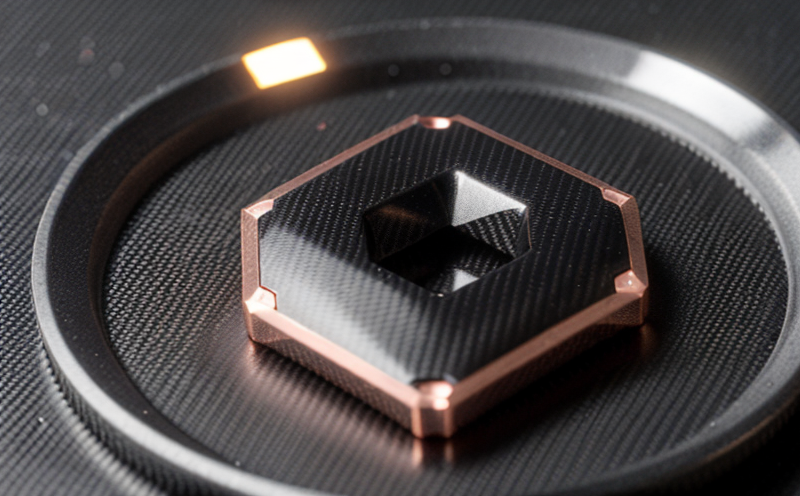DIN 53206 Characterization of Graphene Pigments in Coatings
The DIN 53206 standard is specifically designed to characterize the properties and performance of graphene pigments used in coatings. This standardized process ensures that manufacturers can reliably test and report on their products, thereby facilitating better quality assurance and compliance with industry standards.
Graphene, a single layer of carbon atoms arranged in a hexagonal lattice, has unique physical and chemical properties making it an attractive additive for various industrial applications including coatings. The DIN 53206 method provides a comprehensive approach to assessing the performance metrics that are critical for ensuring that graphene pigments meet the desired specifications.
The testing process involves several key steps which include sample preparation, characterization of the pigment’s structure and morphology using scanning electron microscopy (SEM), X-ray diffraction (XRD) for crystallographic analysis, and Raman spectroscopy to evaluate the quality of the graphene sheets. Additionally, thermal stability tests are conducted under controlled conditions to assess how well the pigment can withstand high temperatures without degrading.
The results obtained from these tests provide valuable insights into the potential performance characteristics of the graphene pigments within coating formulations. For instance, information about particle size distribution helps in predicting the dispersion behavior of the pigment in solvents during manufacturing processes. Understanding the degree of aggregation is also crucial as it affects not only the rheological properties but also the final appearance and durability of the coated surface.
Moreover, mechanical strength tests like tensile testing give an indication of the cohesion between graphene layers and other components within the coating matrix. This parameter plays a significant role in determining the scratch resistance and overall integrity of the finished product. Similarly, chemical stability assessments help identify any reactive sites on the surface of the pigment which could lead to premature degradation or undesirable interactions with environmental factors.
Another important aspect addressed by DIN 53206 is color stability under varying light conditions. Since graphene-based pigments often contribute significantly towards achieving specific shades, maintaining consistent coloration over time is paramount for meeting customer expectations and ensuring product longevity. By quantifying changes in hue or chroma due to exposure to UV radiation or other forms of illumination, this part of the test ensures that the pigment remains stable throughout its intended lifespan.
Finally, biocompatibility evaluations are conducted if there's any concern regarding safety when used directly on human skin or surfaces coming into contact with food products. These tests assess whether impurities present in the production process have migrated onto the surface of the pigment particles and could potentially pose health risks upon use.
Applied Standards
| Standard Number | Description |
|---|---|
| DIN 53206:2019-07 | Characterization of Graphene Pigments in Coatings |
| ISO 14631:2018 | Measurement and Calculation of the Average Particle Size Distribution by Laser Diffraction for Particles with Sizes Ranging from 0.5 µm to 5000 µm |
Benefits
The implementation of DIN 53206 offers numerous advantages for both manufacturers and end-users alike. From a manufacturing perspective, it provides clear guidelines on how to produce high-quality graphene pigments consistently across batches, reducing variability and ensuring uniformity in performance characteristics.
For quality managers, compliance with this standard ensures that their products meet stringent requirements set forth by regulatory bodies, enhancing brand reputation and fostering trust among customers. Compliance also simplifies supply chain management as suppliers must adhere to the same rigorous testing protocols, making it easier for them to source reliable raw materials.
From an R&D standpoint, DIN 53206 serves as a valuable tool for researchers exploring new applications for graphene in coatings. It allows them to standardize their experiments and compare results more accurately against industry benchmarks. This consistency streamlines collaboration efforts between different research groups worldwide, accelerating innovation cycles.
In terms of end-user benefits, the adoption of this standard translates into better-performing products with enhanced durability, scratch resistance, and color retention. Consumers can expect longer-lasting finishes that maintain their aesthetic appeal even after prolonged exposure to harsh environmental conditions such as sunlight or moisture. Additionally, biocompatibility evaluations ensure that any potential health hazards are minimized, providing peace of mind for consumers.
Use Cases and Application Examples
The use of graphene pigments in coatings opens up numerous possibilities across various industries. One prominent example is the automotive sector where lightweight yet durable paints are increasingly sought after to improve fuel efficiency while maintaining aesthetic appeal.
In this context, DIN 53206 plays a crucial role by ensuring that the graphene additives used contribute positively to the mechanical properties of the paint without compromising on its appearance. Another key application lies in architectural coatings designed for buildings facing extreme weather conditions. Here, the enhanced scratch resistance provided by graphene pigments helps protect facades from physical damage over extended periods.
For marine applications, where corrosion protection is paramount, incorporating graphene into anti-fouling paints not only extends service life but also reduces maintenance costs associated with frequent repainting operations. In electronics manufacturing, graphene-based coatings offer excellent electrical conductivity properties which can be harnessed for creating conductive paths on printed circuit boards.
Moreover, in the packaging industry, incorporating graphene into barrier films enhances their ability to prevent oxygen and moisture penetration effectively protecting contents from spoilage or contamination during transportation. Lastly, within medical devices manufacturing, biocompatible graphene pigments enable production of safer implants that interact harmoniously with biological tissues without adverse effects.





